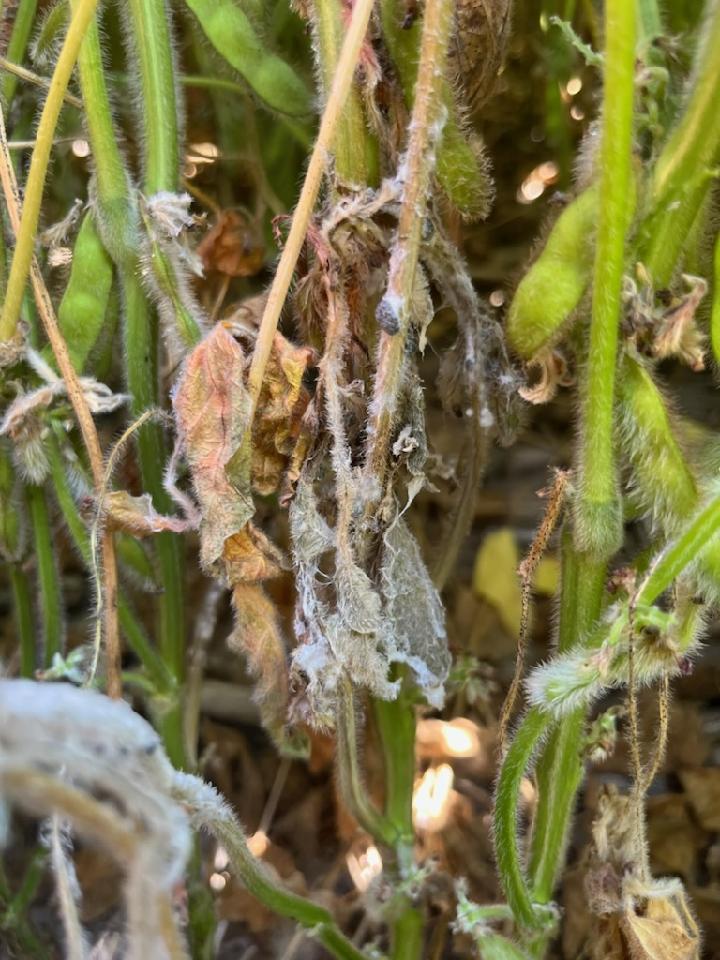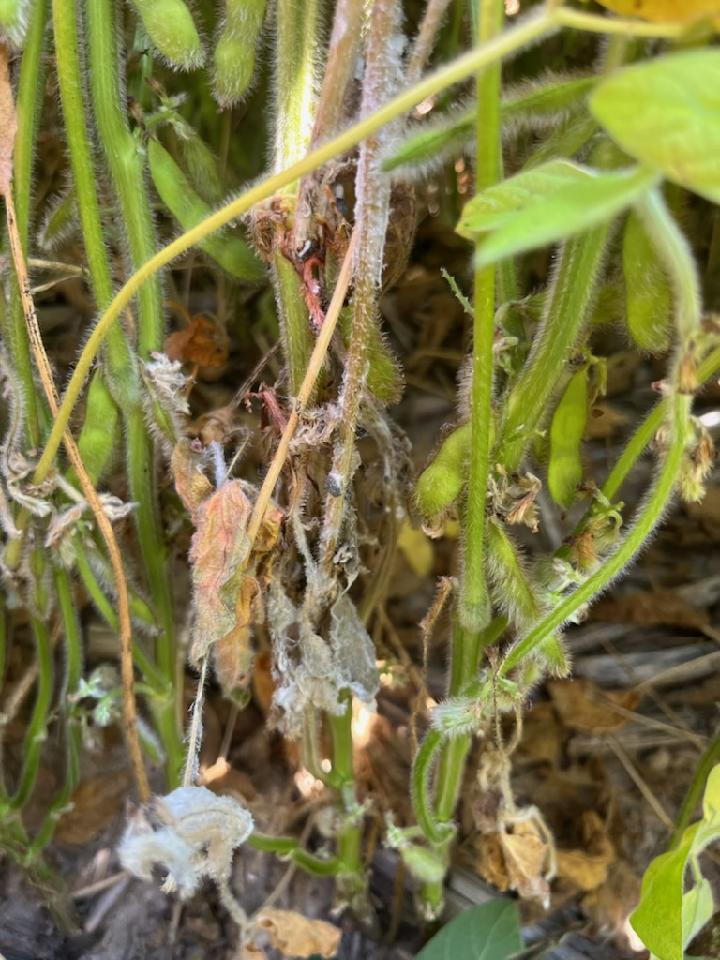Details:
Sclerotinia stem rot (white mold) was scouted in soybeans at the R5 (beginning seed) growth stage. Infected plants were between 25-50% damaged, and around 25% of the site was infected. White mold is caused by the pathogen Sclerotinia sclerotiorum. It can overwinter in the soil as a hard dark mass called sclerotia. Plants are infected during flowering and symptoms may include wilted and discolored leaves, white mycelium growth on stems and pods, and stems or pods that appear water soaked.
Conclusion:
Management of Sclerotinia stem rot is very challenging in Ohio for two key reasons: the pathogen can survive in the soil for several years, and disease development is greatly affected by environmental conditions. There is no single tactic that can be used to manage the disease effectively; therefore, multiple strategies including cultural, chemical and biological methods should be applied to reduce yield losses. Management should be targeted towards those fields with a history of this disease.
Contributor:
Laura Lindsey
The Ohio State University
Resources:
White Mold | Ohio State Extension
White Mold | CPN





